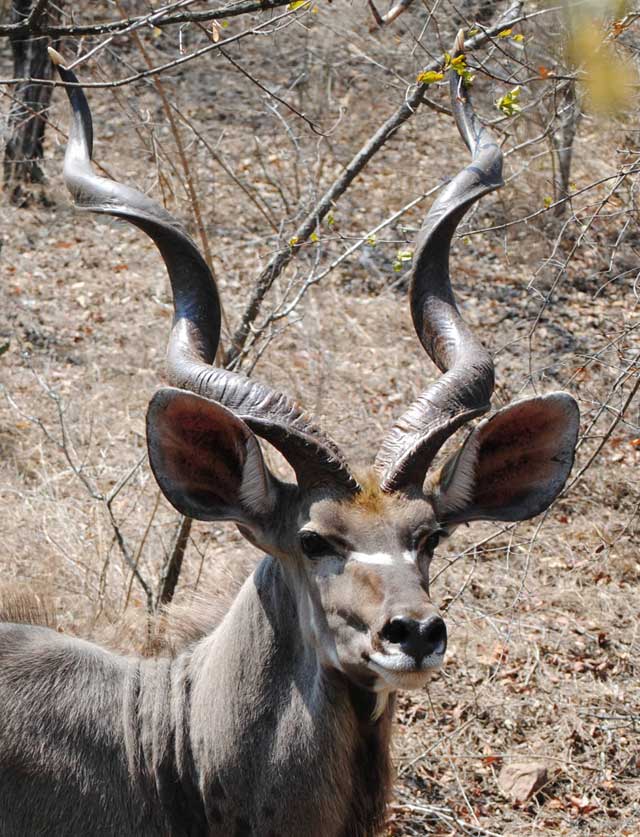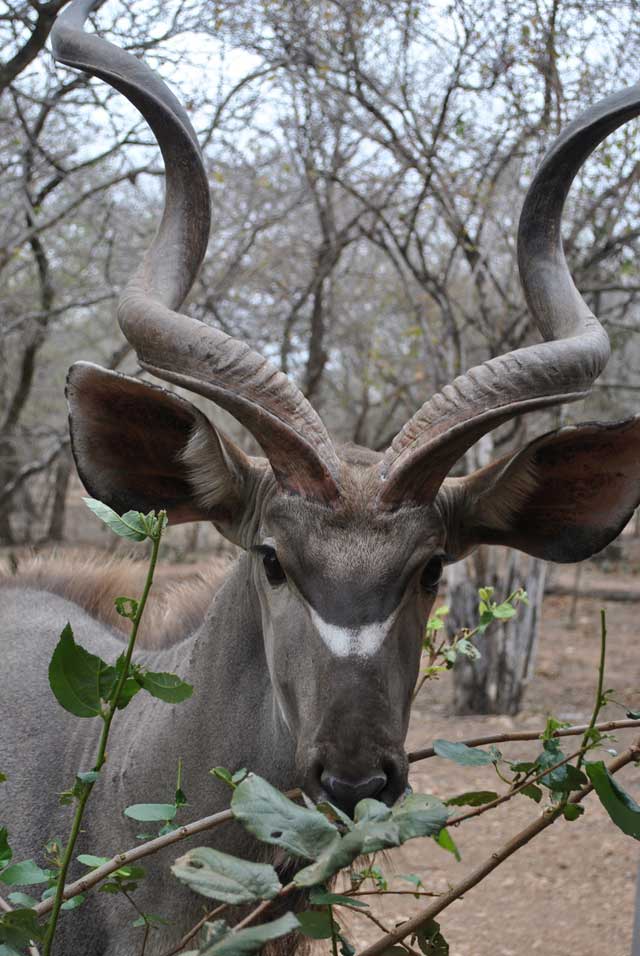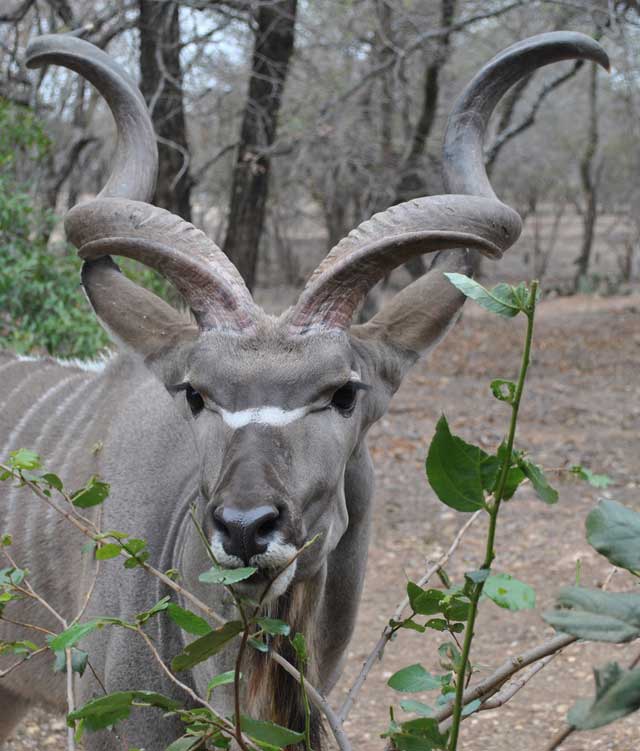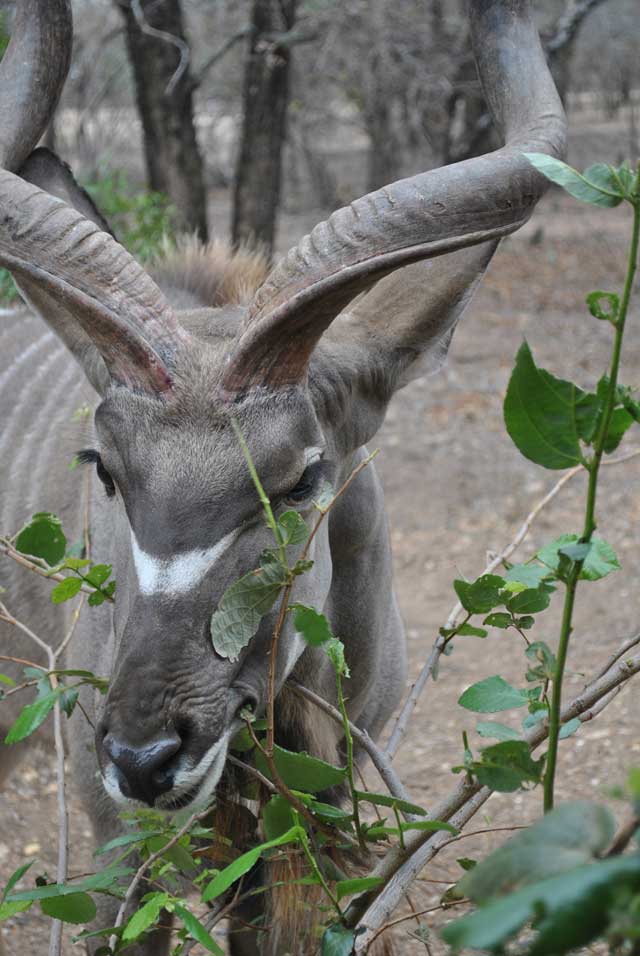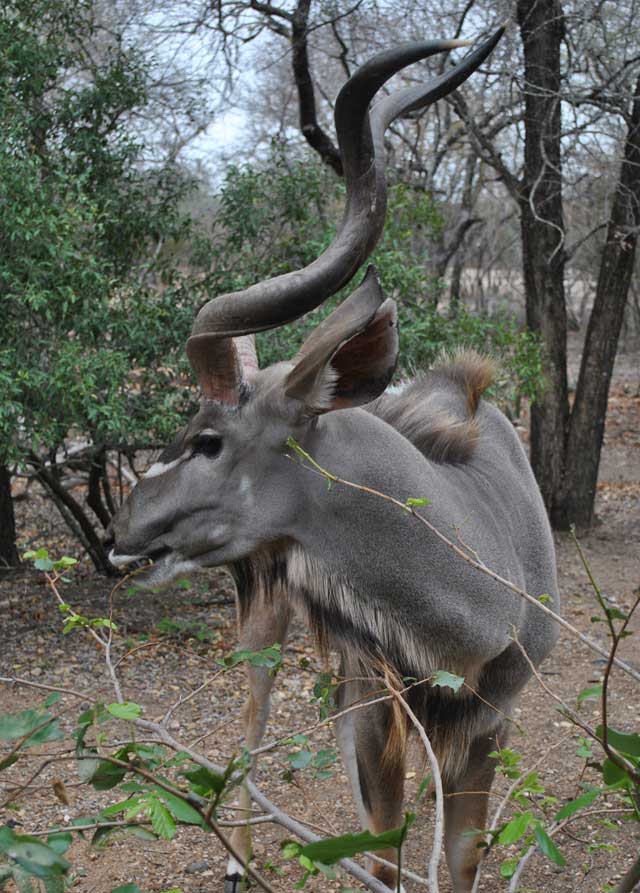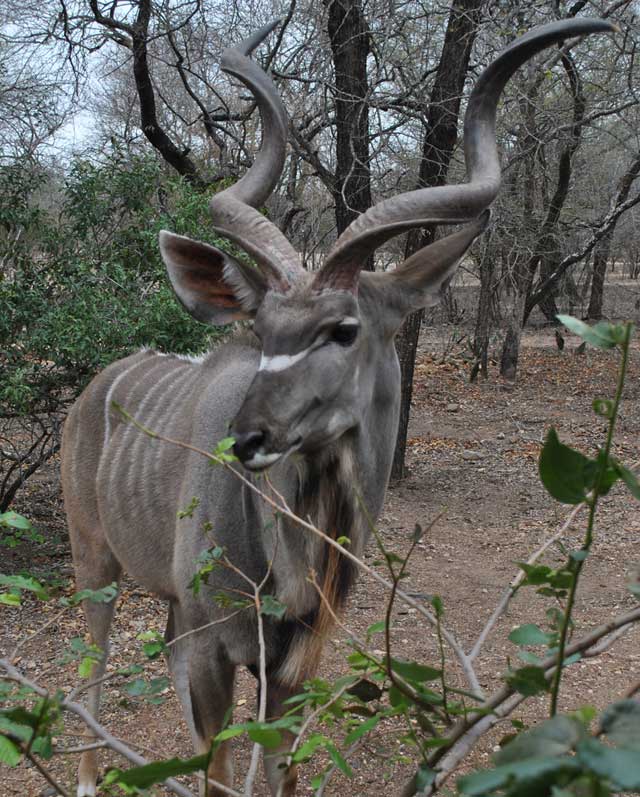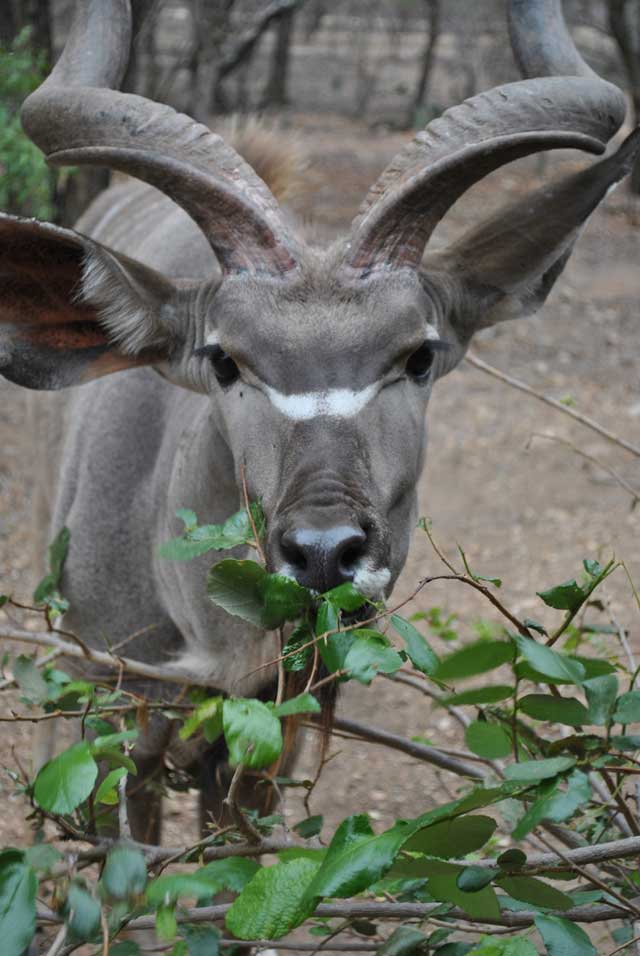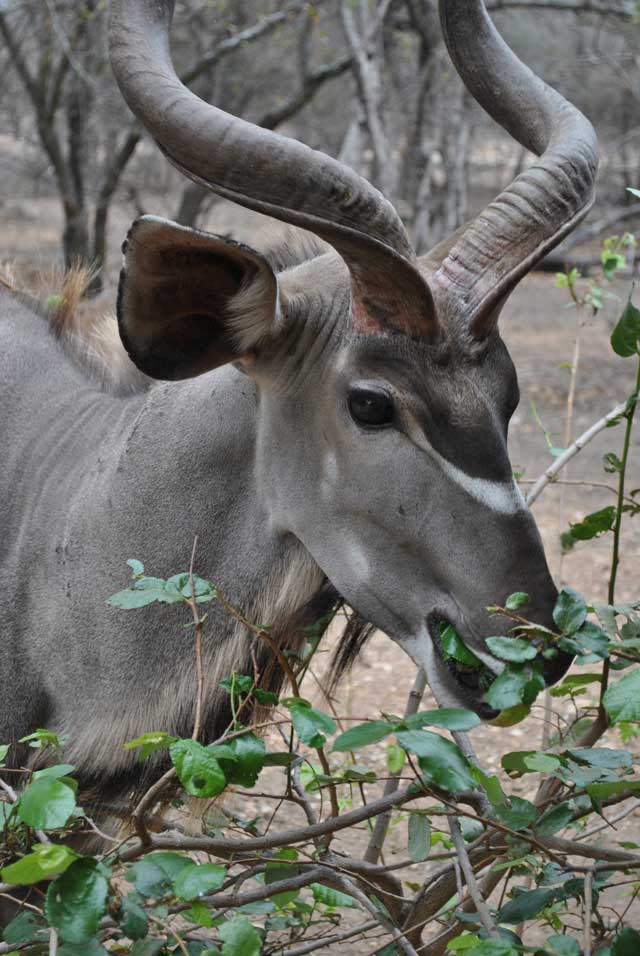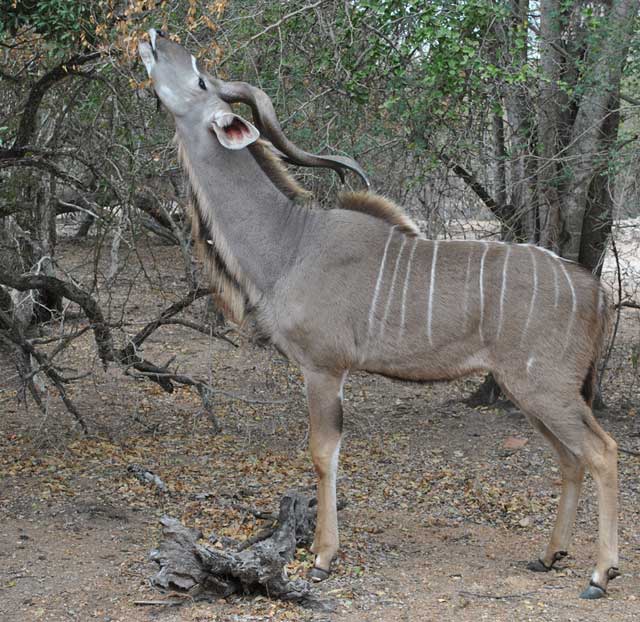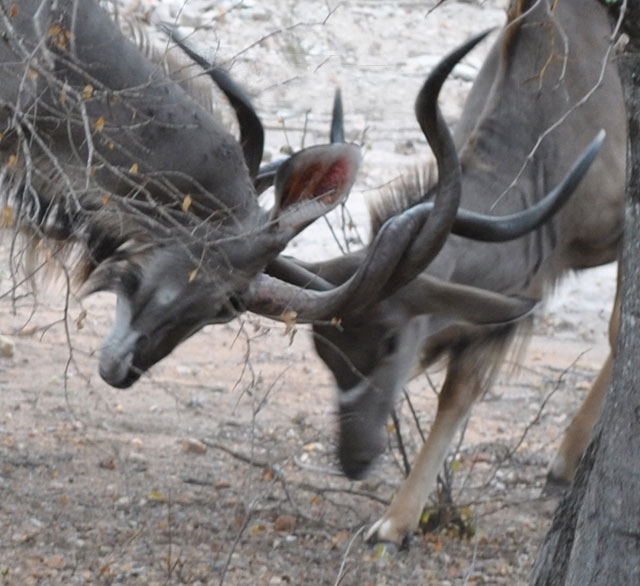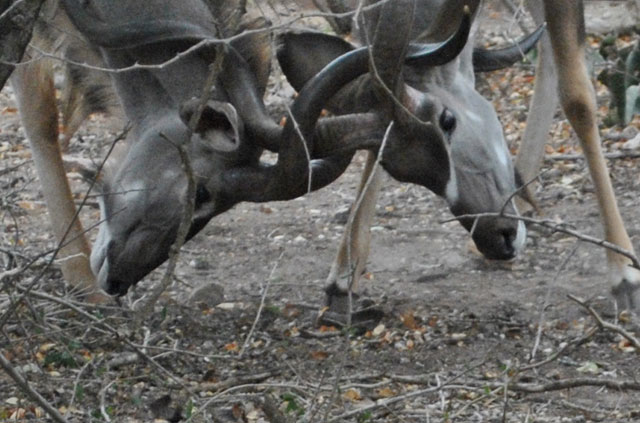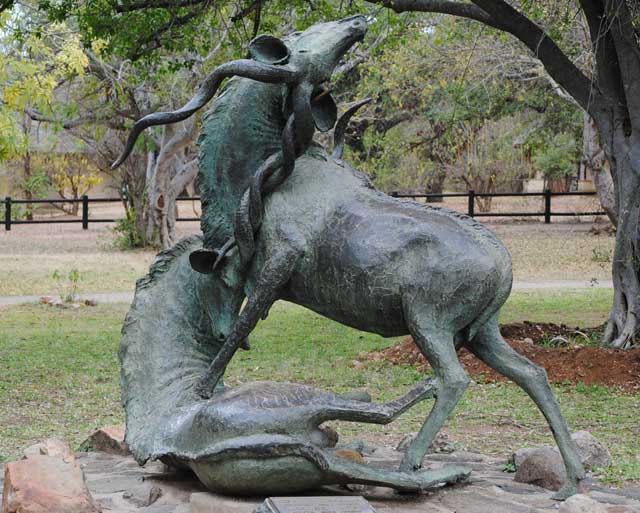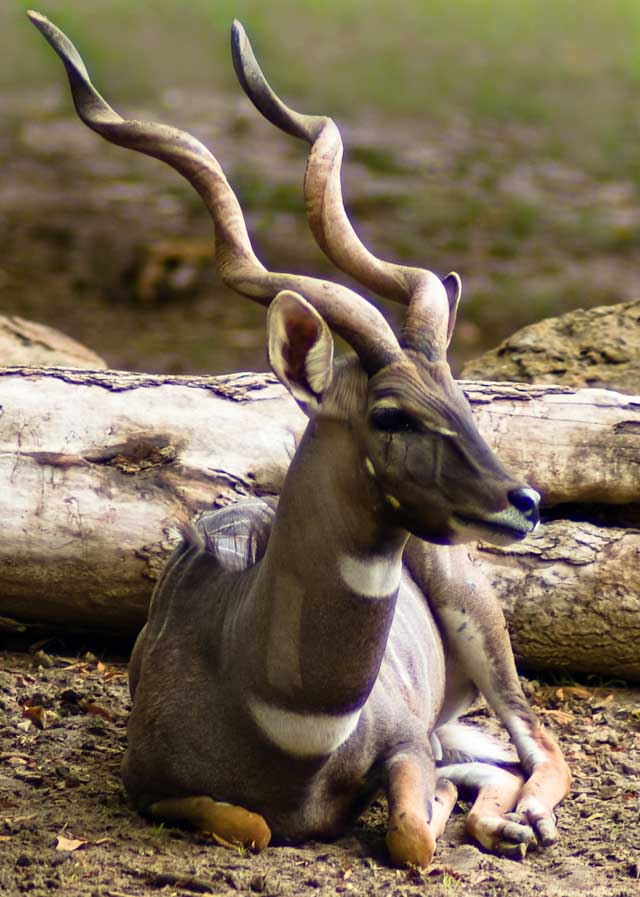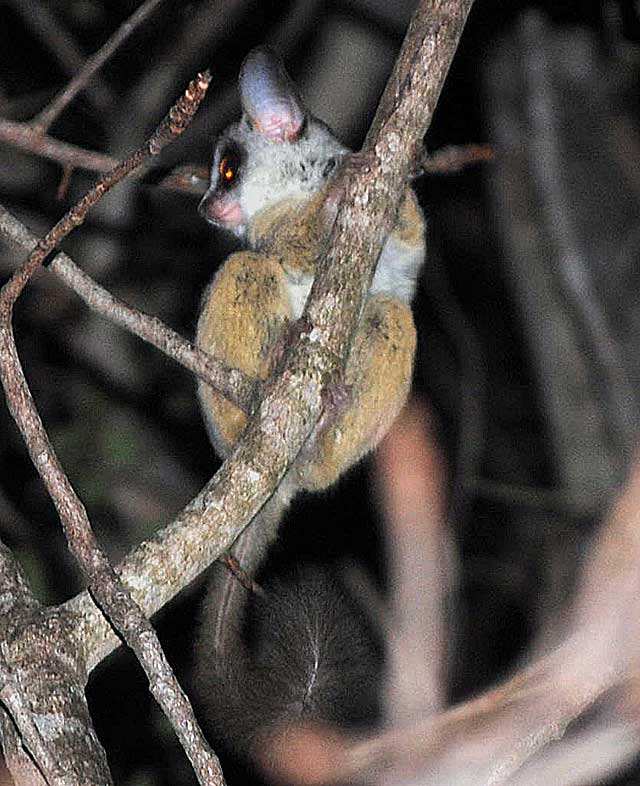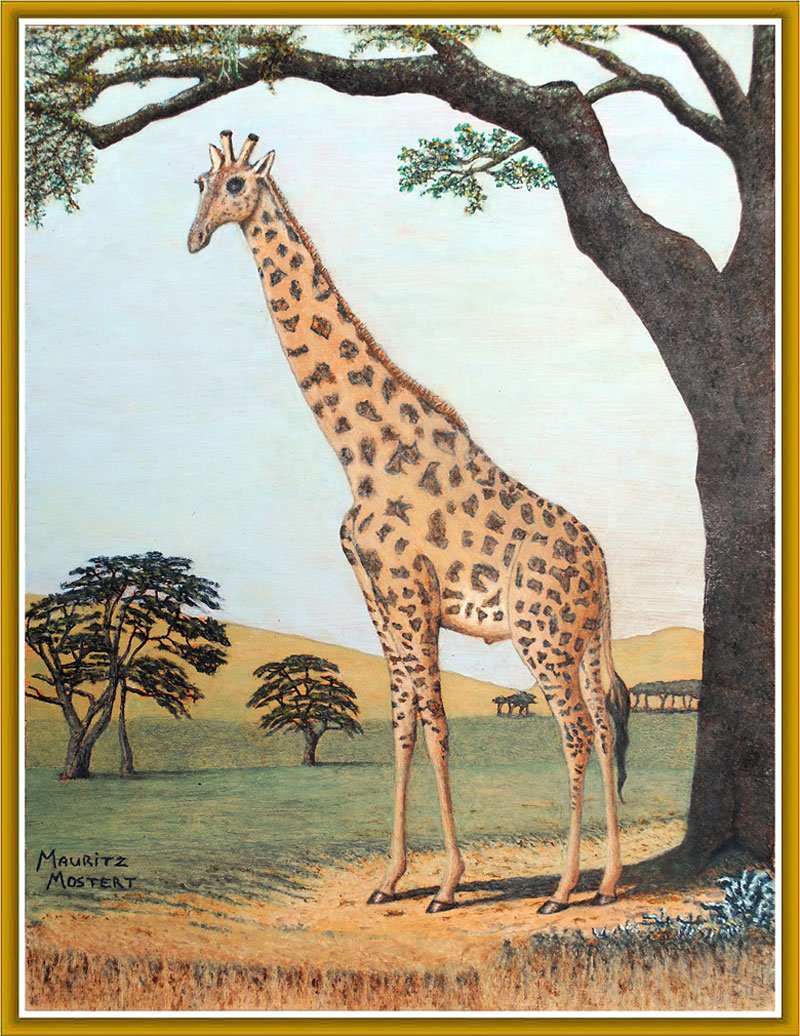Yes, There is Also a Lesser Kudu
The majestic greater kudu
The Greater Kudu (Tragelaphus strepsiceros), a graceful woodland antelope found all over eastern and southern Africa, is one of the most majestic animals to share our particular patch of bush.
The other species commonly known as kudu– the lesser kudu (Tragelaphus imberbis) – is a forest antelope found in East Africa. For a picture of our subject’s forest cousin, scroll to the bottom of this article.
Warthogs have this nasty habit of chasing away any animal in their way to somewhere, by walking straight at them. Especially ones peacefully lying down resting, while chewing the cud. On this occasion, the one ignoring the warthog’s advance, was an old kudu bull well-used to campaigning. First, the warthog rushed at him with no effect, while Spot, almost a three-twister, lowered his one horn in his direction, looking irritatingly pestered by this pudgy one tusk warthog.
The moment Spot began to lift his head and in an instant, the warthog shot forward, butting him with its head, right on the forehead. In a split second, Spot’s horns went down, jabbing directly forward at the warthog. This photo was taken the moment the warthog jumped backwards. Needless to say it was the warthog boar, which had to take another direction on his way to somewhere.
Due to the recent drought, mighty Spot was unfortunately culled; – we call it trophy-hunted through convenience?
Greater kudus can range from bluish-grey, grey-brown all the way to reddish-brown. There are anywhere from four to twelve vertical white stripes along the body and a characteristic white chevron over the nose, directly in line with the bottom of the eyes.
Adult bulls sport a beard that continues into a large mane running under the throat and neck and sometimes along the abdomen, another along the top of the neck, extending to a lessor degree down the back to the top of the tail. By adulthood -5 to 6 years – the large, striking horns will reach two and a half twists, and can often have three full turns – called a three-twister. Bulls are much larger than the cows, and noisier, using low grunts and clucks to communicate.
On average, bulls weigh 190–270 kg (420–600 lb), with a maximum of 315 kg (694 lb), and stand up to 160 cm (63 in) tall at the shoulder.
Greater kudu habitat includes scrub woodland, mopane bush, acacia lowlands, hills, mountains and even semi-desert. Kudu will occasionally venture onto plains if there is a large abundance of bushes, but usually avoid open areas to elude their predators – lions, leopards and hyenas. Although Cheetah hunt kudu, they usually only pursue the small cows and youngsters, in open regions.
While kudu are not territorial, maternal herds can have home ranges of about four square kilometers. The home range of an adult male will be around eleven square kilometers – if the grazing is good – and will comprise the ranges of two or three groups of cows and their offspring.
Kudu bulls sometimes form small bachelor groups, but are usually solitary and scattered. These males will join the group of females and calves only when mating season comes around.
Greater kudu favor a diet of grass, leaves, shoots, roots, and tubers and occasionally fruit. If ever you grow oranges or suchlike, where kudu habitat, make sure your fence is higher than 2.5 meters. Our camp fruit was raided every year in fruiting season, as a result of these being the kudu’s favorite food.
With such huge ears, greater kudu have exceptional hearing, which is a valuable advantage, alerting them to approaching predators. And they are not called the grey ghost of the bush for nothing, seeing stealth is their major modus operandi. Many an old bushman will attest to the kudu and nyala having the best camouflage in the bush. Next would be the bushbuck ram.
Traditionally, African tribes use kudu horns – hollowed out as a wind instrument, to communicate. Locally the Zulu and Matabele tribes used the horns ceremonially and in wartime.
Shofars are made from the horns of the greater kudu. This is the Jewish ceremonial horn sounded at Rosh Hashanah, going back thousands of years.
When soccer fans use a horn of this shape, it is called kuduzela, a combination of “kudu” and “vuvuzela,” the noisemaker of choice for soccer fans in Africa.
The world kudu dung-spitting – bokdrol spoeg – championship is a serious sport amongst some of the Afrikaner community of South Africa. Its origins are however, unknown but could originate from the sport of tobacco-spitting.
In the northernmost reaches of its range, the greater kudu population has dropped due to extreme hunting and habitat loss. Poachers have made the kudu a target for its meat and horns.
The good news is the IUCN Red List (of endangered species) places the greater kudu at low risk due to robust and well-managed populations from southern Tanzania to South Africa.
Kudus spar like this most of their growing-up years, learning the strength of their compatriots and it is for this reason they rarely have to fight when it comes to territory or dominance. Therefore, male kudu usually establish supremacy by means of the lateral display. This is when one male takes up a sideways stance in front of the other and makes himself look as big as possible. If his adversary is suitably impressed, dominance is recognized.
In exceptional circumstances, fighting can result in the horns of the males locking, leading to the death of both animals.
From these images you can clearly see how kudu can get their horns locked, causing death as depicted in the bronze statue below.
This famous statue is exhibited in the grounds of Skukuza Camp, the administrative center of the Kruger National Park.
A lesser kudu bull has a black crest of hair on the neck but there is no hair under the throat and chest like its greater cousin.
The male can reach about 95–105 cm (37–41 in) at the shoulder and typically weighs 92–108 kg (203–238 lb), as you can see, it is much smaller than its greater cousin.
The lesser kudu, rated as “near-threatened” by the ICUN, is confined to the Horn of Africa.
Video Run Time: 5:00 min

